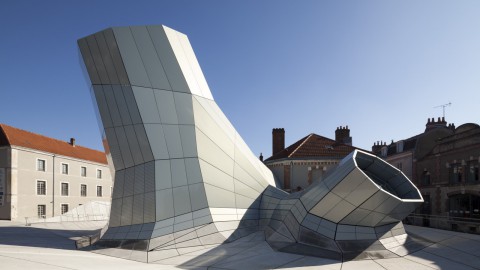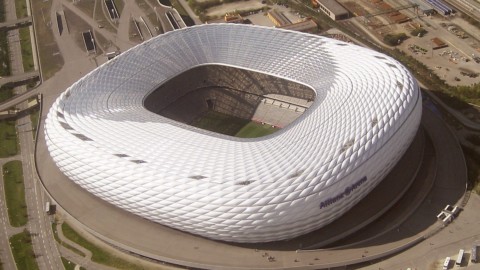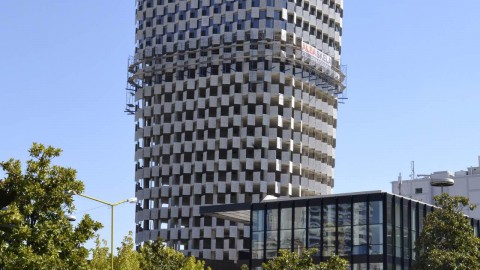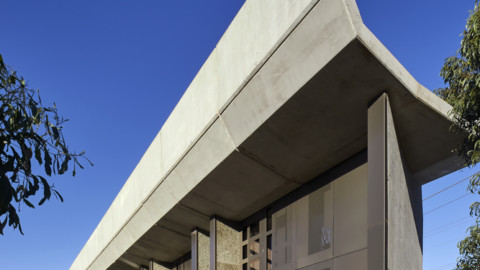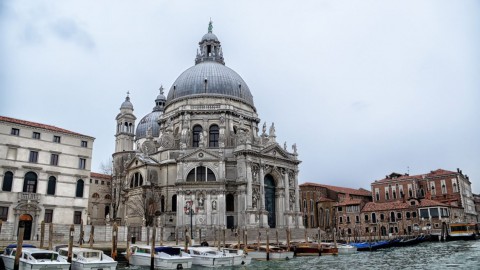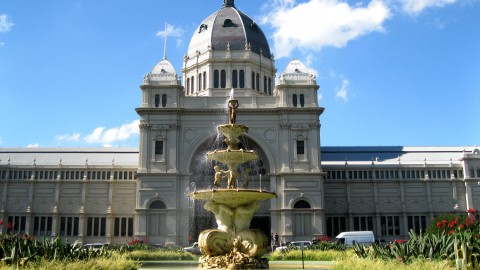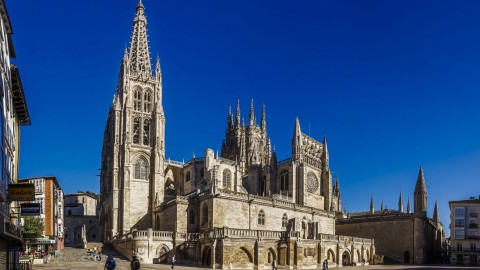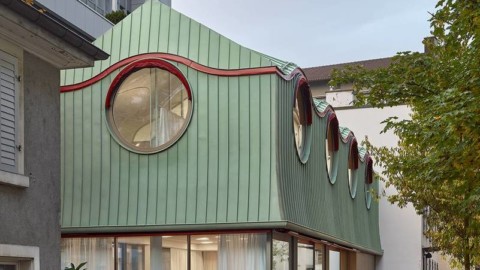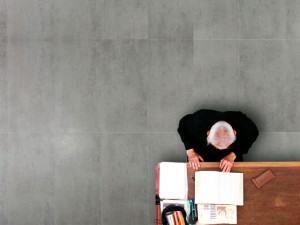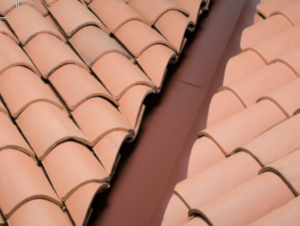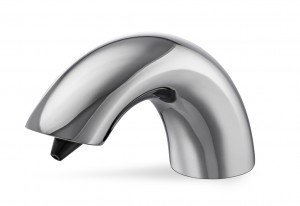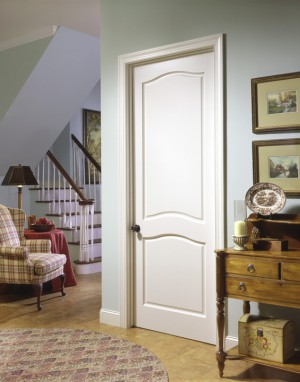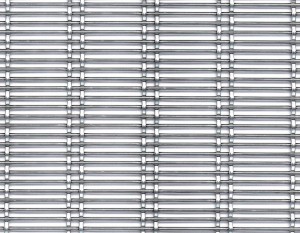Centre Georges Pompidou 龐畢度中心

Centre Georges Pompidou (French pronunciation: [sɑ̃tʁ ʒɔʁʒ pɔ̃pidu]), commonly shortened to Centre Pompidou and also known as the Pompidou Centre in English, is a complex building in the Beaubourg area of the 4th arrondissement of Paris, near Les Halles, rue Montorgueil, and the Marais. It was designed in the style of high-tech architecture by the architectural team of Richard Rogers and Renzo Piano, along with Gianfranco Franchini.
It houses the Bibliothèque publique d’information (Public Information Library), a vast public library; the Musée National d’Art Moderne, which is the largest museum for modern art in Europe; and IRCAM, a centre for music and acoustic research. Because of its location, the Centre is known locally as Beaubourg (IPA: [bobuʁ]). It is named after Georges Pompidou, the President of France from 1969 to 1974 who commissioned the building, and was officially opened on 31 January 1977 by President Valéry Giscard d’Estaing. As of 2006, the Centre Pompidou has had over 180 million visitors since 1977 and more than 5,209,678 visitors in 2013, including 3,746,899 for the museum.
The sculpture Horizontal by Alexander Calder, a free-standing mobile that is 7.6 m (25 ft) tall, was placed in front of the Centre Pompidou in 2012.
Centre Georges Pompidou(法語發音:[sɑtʁʁpɔpidu]),通常縮寫為蓬皮杜中心,也被稱為蓬皮杜中心,是巴黎第四區Beaubourg地區的一座複雜建築,靠近Les Halles,rue Montorgueil和Marais。它由Richard Rogers和Renzo Piano的建築團隊以及Gianfranco Franchini以高科技建築風格設計。
它擁有Bibliothèque公共信息圖書館(公共信息圖書館),一個龐大的公共圖書館;現代藝術博物館(MuséeNationald’Art Moderne),是歐洲最大的現代藝術博物館;和IRCAM,音樂和聲學研究中心。由於其地理位置,該中心在當地被稱為Beaubourg(IPA:[bobuʁ])。它以1969年至1974年法國總統喬治·蓬皮杜(Georges Pompidou)的名字命名,他於1969年1月31日由總統ValéryGiscardd’Estaing正式開放。截至2006年,蓬皮杜中心自1977年以來已有超過1.8億遊客,2013年有超過5,209,678名遊客,其中包括3,746,899名遊客。
雕塑水平由亞歷山大考爾德,一個7.6米(25英尺)高的獨立手機,於2012年放置在蓬皮杜藝術中心前面。
General information
Type:Culture and leisure
Architectural style:Postmodern / high-tech
Location:Paris, France
Completed:1971–1977
Technical details
Structural system:Steel superstructure with reinforced concrete floors
Design and construction
Architect:Renzo Piano, Richard Rogers and Gianfranco Franchini
Structural engineer:Arup
Services engineer:Arup
一般信息
類型:文化和休閒
建築風格:後現代/高科技
地點:法國巴黎
完成:1971-1977
技術細節
結構系統:鋼結構上部結構,鋼筋混凝土地板
設計和施工
建築師:Renzo Piano,Richard Rogers和Gianfranco Franchini
結構工程師:Arup
服務工程師:Arup
History
The idea for a multicultural complex, bringing together in one place different forms of art and literature, developed, in part, from the ideas of France’s first Minister of Cultural Affairs, André Malraux, a western proponent of the decentralisation of art and culture by impulse of the political power. In the 1960s, city planners decided to move the foodmarkets of Les Halles, historically significant structures long prized by Parisians, with the idea that some of the cultural institutes be built in the former market area. Hoping to renew the idea of Paris as a leading city of culture and art, it was proposed to move the Musée d’Art Moderne to this new location. Paris also needed a large, free public library, as one did not exist at this time. At first the debate concerned Les Halles, but as the controversy settled, in 1968, President Charles de Gaulle announced the Plateau Beaubourg as the new site for the library. A year later in 1969, the new president adopted the Beaubourg project and decided it to be the location of both the new library and a centre for the contemporary arts. In the process of developing the project, the IRCAM (Institut de Recherche et Coordination Acoustique/Musique) was also housed in the complex.
The Rogers and Piano design was chosen among 681 competition entries. World-renowned architects Oscar Niemeyer, Jean Prouvé and Philip Johnson made up the jury. It was the first time in France that international architects were allowed to participate. The selection was announced in 1971 at a “memorable press conference” where the contrast between the sharply-dressed Pompidou and “hairy young crew” of architects represented a “grand bargain between radical architecture and establishment politics.”
歷史
多元文化綜合體的理念,在一個地方匯集了不同形式的藝術和文學,部分源於法國第一任文化事務部長AndréMalraux的想法,AndréMalraux,西方支持者通過衝動分散藝術和文化政治權力在20世紀60年代,城市規劃者決定搬遷Les Halles的食品市場,這是歷史上重要的建築,長期受到巴黎人的青睞,並認為一些文化機構建在前市場區域。為了更新巴黎作為文化和藝術的主要城市的想法,有人提議將Muséed’ArtModerne搬到這個新的地方。巴黎還需要一個大型的免費公共圖書館,因為此時並不存在。起初辯論涉及Les Halles,但隨著爭議的解決,1968年,戴高樂總統宣布高原Beaubourg成為圖書館的新址。一年後的1969年,新總統採用了Beaubourg項目,並決定將其作為新圖書館和當代藝術中心的所在地。在開發項目的過程中,IRCAM(Institut de Recherche et Coordination Acoustique / Musique)也被安置在綜合體內。
羅傑斯和鋼琴設計在681個參賽作品中被選中。世界知名建築師Oscar Niemeyer,JeanProuvé和Philip Johnson組成了評委會。這是法國第一次允許國際建築師參與。選擇於1971年在“令人難忘的新聞發布會”上宣布,蓬勃發展的蓬皮杜和建築師的“毛茸茸的年輕船員”之間的對比代表了“激進建築與建立政治之間的大討價還價”。

Architecture
Design
It was the first major example of an ‘inside-out’ building in architectural history, with its structural system, mechanical systems, and circulation exposed on the exterior of the building. Initially, all of the functional structural elements of the building were colour-coded: green pipes are plumbing, blue ducts are for climate control, electrical wires are encased in yellow, and circulation elements and devices for safety (e.g., fire extinguishers) are red. According to Piano, the design was meant to be “not a building but a town where you find everything – lunch, great art, a library, great music”.
National Geographic described the reaction to the design as “love at second sight.” An article in Le Figaro declared “Paris has its own monster, just like the one in Loch Ness.” But two decades later, while reporting on Rogers’ winning the Pritzker Prize in 2007, The New York Times noted that the design of the Centre “turned the architecture world upside down” and that “Mr. Rogers earned a reputation as a high-tech iconoclast with the completion of the 1977 Pompidou Centre, with its exposed skeleton of brightly coloured tubes for mechanical systems. The Pritzker jury said the Pompidou “revolutionised museums, transforming what had once been elite monuments into popular places of social and cultural exchange, woven into the heart of the city.”
建築
設計
這是建築史上“由內而外”建築的第一個主要例子,其結構系統,機械系統和建築外部的循環。最初,建築物的所有功能結構元素都是用顏色編碼的:綠色管道是管道,藍色管道用於控制氣候,電線用黃色包裹,循環元件和安全裝置(如滅火器)是紅色的。根據鋼琴的說法,這個設計意味著“不是建築物,而是一個你可以找到一切的小鎮 – 午餐,藝術,圖書館,音樂很棒”。
“國家地理”雜誌將對設計的反應描述為“一見鍾情”。 Le Figaro的一篇文章宣稱“巴黎有自己的怪物,就像在尼斯湖的那個。”但二十年後,在報導羅傑斯在2007年贏得普利茲克獎時,“紐約時報”指出,該中心的設計“顛覆了建築世界”,“羅傑斯先生贏得了高科技的聲譽”隨著1977年蓬皮杜藝術中心的落成,其機身系統的外露骨架顏色鮮豔。普利茲克評審團表示,蓬皮杜“徹底改變了博物館,將曾經的精英古蹟轉變為流行的社會和文化交流場所,編織成這座城市的中心。“

Construction
The Centre was built by GTM and completed in 1977. The building cost 993 million 1972 French francs. Renovation work conducted from October 1996 to January 2000 was completed on a budget of 576 million 1999 francs.
Building specifications
Land area:2 hectares (5 acres)
Floor area:103,305 ㎡
Superstructure:7 levels
Height:42 m (Rue Beaubourg side), 45.5 m (Piazza side)
Length:166 m
Width:60 m
Infrastructure:3 levels
Dimensions:Depth: 18 m; Length: 180 m; Width: 110 m
Materials used
Earthworks:300,000 m3
Reinforced concrete:50,000 m3
Metal framework:15,000 tonnes of steel
Façades, glass surfaces:11,000 ㎡
Opaque surfaces:7,000㎡
施工
該中心由GTM建造並於1977年完工。該建築耗資9.93億1972法國法郎。 1996年10月至2000年1月期間進行的裝修工程已完成,預算為5.76億1999法郎。
建築規格
土地面積:2公頃(5英畝)
建築面積:103,305平方米
上層建築:7層
高度:42米(Rue Beaubourg一側),45.5米(廣場一側)
長度:166米
寬度:60米
基礎設施:3個級別
尺寸:深度:18米; 長度:180米; 寬度:110米
使用的材料
土方工程:300,000立方米
鋼筋混凝土:50,000立方米
金屬框架:15,000噸鋼
外牆,玻璃表面:11,000平方米
不透明表面:7,000平方米

Place Georges Pompidou
The Place Georges Pompidou in front of the museum is noted for the presence of street performers, such as mimes and jugglers. In the spring, miniature carnivals are installed temporarily into the place in front with a wide variety of attractions: bands, caricature and sketch artists, tables set up for evening dining, and even skateboarding competitions.
喬治蓬皮杜廣場
蓬皮杜廣場(Place Georges Pompidou)位於博物館前,以街頭表演者的身份而聞名,如啞劇演員和雜耍演員。 在春天,微型嘉年華會暫時安裝在前面的地方,有各種各樣的景點:樂隊,漫畫和素描藝術家,晚餐設置的桌子,甚至是滑板比賽。


FROM:https://en.wikipedia.org/wiki/Centre_Georges_Pompidou
FROM:Renzo PIANO & Richard ROGERS – The Georges POMPIDOU Center
Don’t you think it’s addictive?
Want to know more about the beauty of architecture?
Come and join our members to explore the beauty of architectural design.
覺得看得不過癮嗎?
想要知道更多建築之美嗎?
快來加入我們的會員,一同探索建築設計之美。
The above article is purely for appreciation and sharing purposes, as well as the construction of new technology and the public can be in-depth understanding of the information at the same time there are sources, will be able to query, no use of the document as a commercial transaction, if illegal, please inform the We will immediately remove the site, thank you for cooperation.
以上文章純粹作為欣賞及分享用途,以及將建築新型技術傳遞給與大眾能夠深入了解,同時資料還有來源,將可查詢,絕無使用該文件資料作為商業交易行為,如有違法請務必告知該網站我們將立即處理撤除,謝謝合作。


